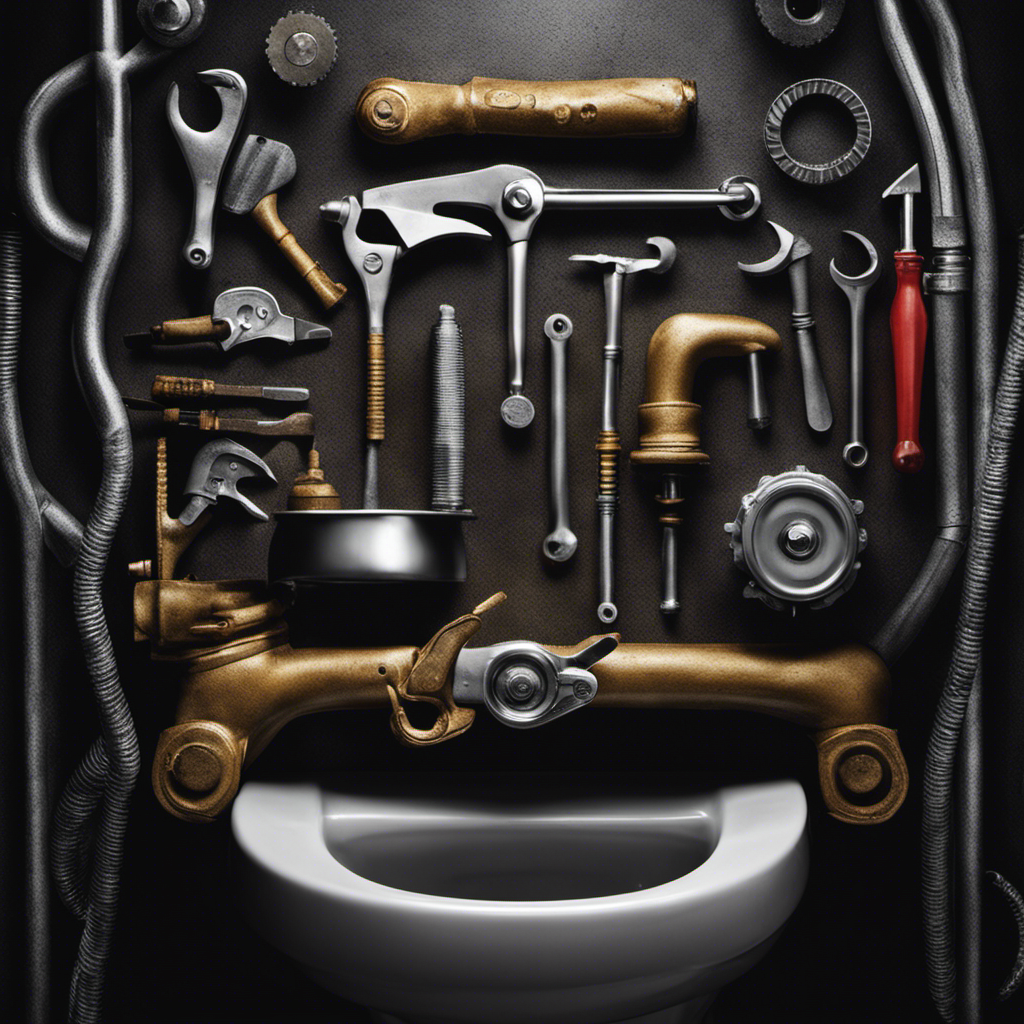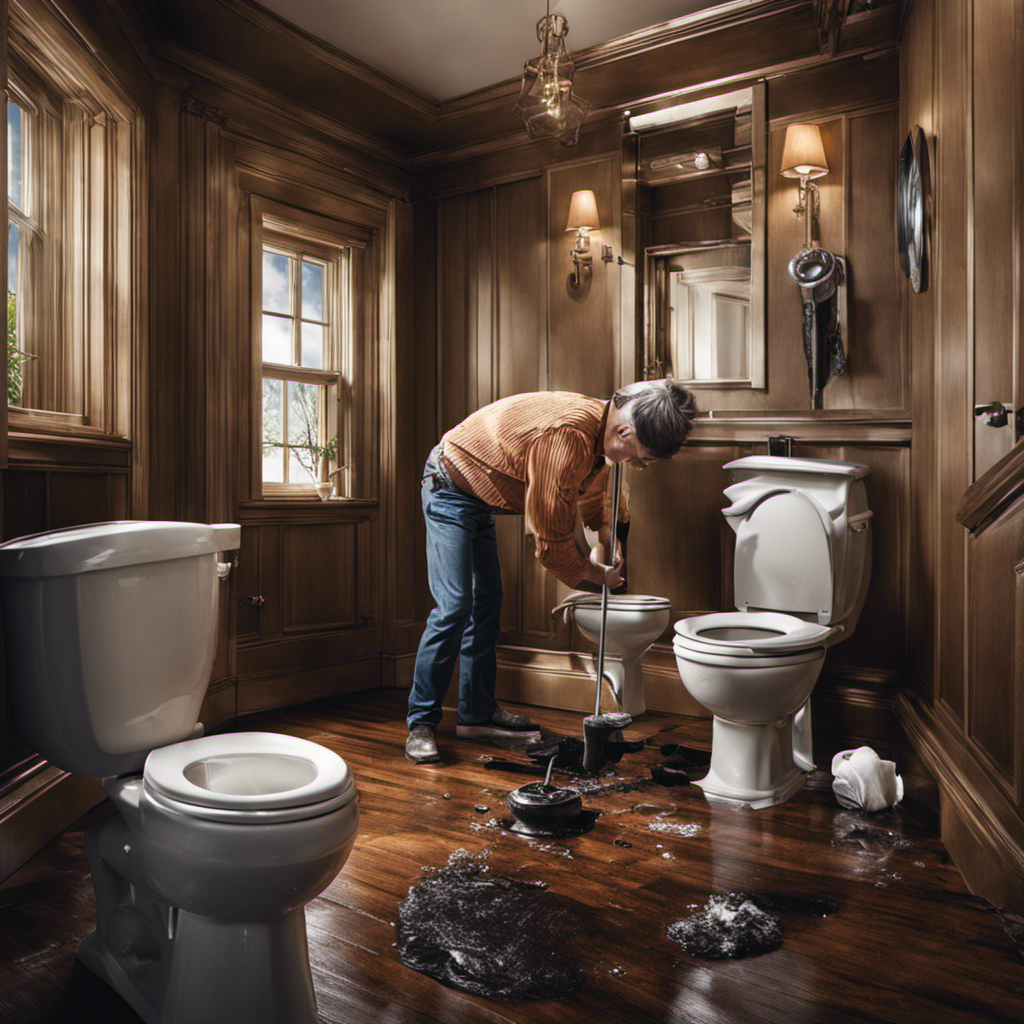As a homeowner, I know how frustrating it can be when your toilet bolts become loose or rusted. Don’t worry, though, because I’m here to help you tackle this common household issue.
In this article, I will guide you through the step-by-step process of replacing toilet bolts. By following my detailed instructions and using the right tools, you’ll be able to ensure a secure and leak-free connection.
So let’s dive in and get your toilet back in tip-top shape!
Key Takeaways
- Loose or rusted toilet bolts can cause leaks and damage to the bathroom.
- Overtightening toilet bolts can lead to cracks in the porcelain and water leakage.
- Signs indicating the need for toilet bolt replacement include wobbling, water seepage, and foul odor.
- Promptly replacing toilet bolts can prevent further damage and ensure proper toilet functioning.
Understanding the Importance of Replacing Toilet Bolts
Understanding the importance of replacing toilet bolts is crucial to avoid potential leaks and damage to your bathroom. Many people overlook the significance of these small yet essential components, leading to costly repairs down the line.
One of the most common mistakes when replacing toilet bolts is overtightening them. This can cause the porcelain to crack and result in water leakage. It is important to remember that toilet bolts should be tightened just enough to keep the toilet stable, but not too tight.
Signs that indicate the need for toilet bolt replacement include wobbling or rocking of the toilet, water seepage around the base, or a foul odor in the bathroom. By recognizing these signs and promptly replacing the bolts, you can prevent further damage and ensure the proper functioning of your toilet.
Gathering the Necessary Tools and Materials
First, you’ll need to gather all the tools and materials required for the task at hand.
When replacing toilet bolts, it’s important to choose the right type of bolts that will securely hold your toilet in place. Start by measuring the length of the existing bolts to ensure you get the correct size.
Additionally, you’ll need a wrench or pliers to loosen and remove the old bolts, as well as a putty knife to scrape away any old wax or debris.
To install the new bolts, you’ll need new wax rings, which create a watertight seal between the toilet and the floor. It’s also a good idea to have a bucket or towels on hand to catch any water that may leak during the process.
With these tools and materials ready, you’re well-equipped to tackle the step-by-step guide for replacing toilet bolts.
Removing the Old Toilet Bolts
To remove the old bolts, you’ll need to use a wrench or pliers to loosen and unscrew them from the toilet. One of the most common mistakes people make when removing toilet bolts is using excessive force. This can lead to stripped threads or even damage to the toilet bowl.
To prevent this, it’s important to apply steady pressure while turning the wrench or pliers. Another mistake to avoid is not using lubricant. Applying a lubricant, such as WD-40, to the bolts before attempting to remove them can make the process much easier.
Additionally, it’s crucial to ensure that you are using the correct size of wrench or pliers for the bolts. Using the wrong size can cause slippage and potential damage.
Installing the New Toilet Bolts
One thing you’ll need for installing the new toilet bolts is a set of washers to provide a secure fit.
Before installing the bolts, it’s important to ensure proper alignment of the toilet bowl and the floor flange. This can be achieved by placing the bowl on the flange and adjusting it until it sits evenly.
Once the alignment is correct, insert the bolts through the holes in the toilet base and secure them with the washers. To properly tighten the bolts, use a wrench to alternate between tightening each bolt a little at a time until they are snug.
Be careful not to overtighten, as this can crack the toilet bowl. This tightening technique helps prevent leaks and ensures a secure and leak-free connection between the toilet and the floor.
Ensuring a Secure and Leak-Free Connection
Make sure you tighten the bolts evenly to ensure a secure and leak-free connection between the toilet and the floor.
One of the most common mistakes when replacing toilet bolts is not tightening them evenly. This can lead to an uneven and unstable toilet, which can cause leaks.
To avoid this, start by hand tightening the bolts until they are snug. Then, using a wrench, tighten each bolt a little at a time, alternating between them, until they are both securely tightened.
Once you have replaced the toilet bolts and tightened them evenly, it is important to check for any leaks. To troubleshoot leaks, carefully inspect the base of the toilet for any signs of water.
If you notice any leaks, try tightening the bolts a little more or consider replacing the wax ring to create a better seal.
Frequently Asked Questions
How Do I Know if My Toilet Bolts Need to Be Replaced?
If you notice wobbling or movement in your toilet, it could be a sign of worn-out toilet bolts. To replace them, start by turning off the water supply, removing the toilet, and installing new bolts.
Can I Use Any Type of Bolts to Replace My Toilet Bolts?
Yes, you can use different types of bolts to replace your toilet bolts. However, it is important to ensure proper installation to avoid any issues such as leaks or loose fittings.
Do I Need to Shut off the Water Supply Before Replacing the Toilet Bolts?
Yes, it is crucial to shut off the water supply before replacing toilet bolts. This ensures that no water leaks while you work. Turn off the shut-off valve located near the base of the toilet.
How Often Should Toilet Bolts Be Replaced?
Toilet bolt maintenance is crucial for avoiding leaks and instability. Signs of worn out toilet bolts include rust, wobbling, and water seepage. Regularly inspect and replace them every few years to ensure a secure and reliable toilet.
Can I Reuse the Old Washers and Nuts When Installing the New Toilet Bolts?
Yes, you can reuse the old washers and nuts when installing new toilet bolts. However, it’s important to inspect them for wear and damage. If they are in good condition, reusing them is a cost-effective option. Alternatively, you can explore other fastening options.
Conclusion
In conclusion, replacing toilet bolts is a simple and essential task that can prevent future leaks and ensure the stability of your toilet. By following the steps outlined in this article, you can easily remove the old bolts and install new ones with confidence.
With the right tools and materials, a secure and leak-free connection is within reach. So why wait? Take action now and give your toilet the attention it deserves.
Isn’t it time for a hassle-free and worry-free bathroom experience?









